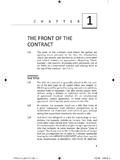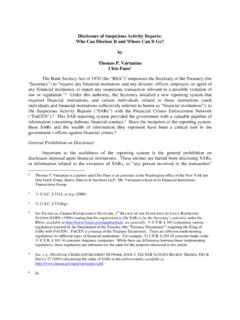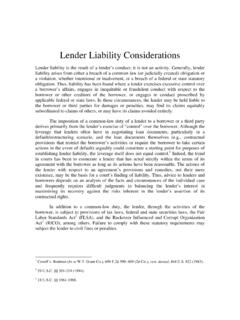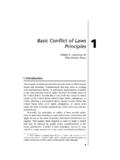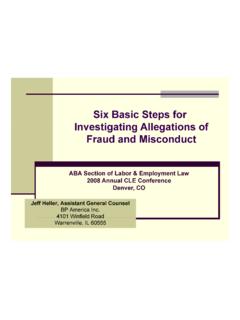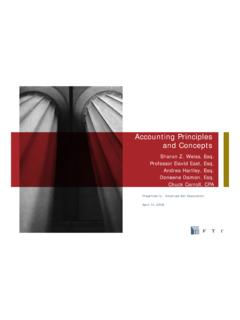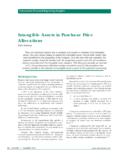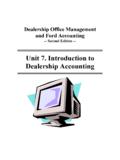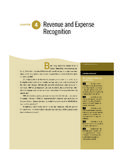Transcription of Employee Benefits Issues in Mergers, Acquisitions …
1 2001 american Bar association Employee Benefits Issues in mergers , Acquisitions and Dispositions by Eleanor F. Banister1 Sarah N. Lowe James F. Merna King & Spalding Atlanta, Georgia David R. Levin2 Kilpatrick Stockton LLP Washington, William T. Payne3 Schwartz, Steinsapir, Dohrmann & Sommers Pittsburgh, Pennsylvania Jani K. Rachelson4 Cohen, Weiss and Simon New York, New York 2001 american Bar association -2- Dealing with Employee Benefits in mergers , Acquisitions and Dispositions I. Introduction Employee benefit Issues present interesting challenges and significant liabilities in any business transaction. Issues arise under the Code,5 ERISA,6 and other federal laws as well as under state II. Determine Your Role in the Transaction The Issues that affect you and your clients will depend on the type of transaction and your client s role in the transaction. A business transaction generally involves particular assets and liabilities of an entity (an asset deal ) or an equity interest in the entity (a stock deal ).
2 8 Parties to a business transaction generally fall into one of two roles a party is either a buyer or a Accordingly, it is important at the outset to determine your client s role in the business transaction and whether the transaction is an asset deal or a stock deal. The principal advantage of an asset deal is that the buyer can pick and choose the assets and liabilities acquired. Thus, a buyer in an asset deal can choose not to acquire all or certain Employee benefit liabilities. On the other hand, the value of the equity interest purchased by a buyer in a stock deal automatically is affected by all Employee benefit liabilities of the entity in which the interest is III. Conducting the Diligence The buyer in any transaction, and each party in a merger, will want to conduct significant diligence on the Employee benefit plans and programs offered by the other party. An asset deal may require less diligence as to plan operation and administration than a stock deal or merger, provided the buyer is not assuming Employee benefit liabilities in the transaction.
3 However, where the buyer is assuming a plan of the seller, the diligence should be the same as with a stock deal so that the buyer can determine if there are any specific liabilities with respect to the plan that should remain with the seller. The buyer should review every current Employee benefit plan, program or practice and, for a stock deal, any plan, program or practice that has been maintained for some period of time prior to the transaction. It is not unusual for a buyer to require the seller to make representations and warranties with respect to the administration and operation of Employee Benefits for an unlimited period of time prior to the transaction. However, many practitioners are comfortable with a period of time of three to six years prior to the transaction. There is no magic to these numbers except that three years approximates the general limitations period for recovering taxes under the Code11 and six years is the general statute of limitations on actions under Ask for written descriptions of informal plans, programs and practices, for example, an informal practice of paying severance upon termination of employment.
4 Employee handbooks and personnel manuals for managers are a good source of informal plans, programs and practices. After you have identified each plan, program or practice, collect the relevant documentation for each one the written plan document, amendments to the plan document, the trust document, summary plan description, Internal Revenue Service ( IRS ) Form 5500, and so forth. It is also a good idea to request copies of service arrangements with third parties relating to the plans, for 2001 american Bar association -3- example, the service agreements with the third party administrator for self-insured health plans or 401(k) plans. For plans subject to Code nondiscrimination requirements where failure to comply has tax implications, ask for evidence that the plans satisfy those nondiscrimination tests and of any corrective action taken in the event the plans failed the tests. Each plan, program or practice should be reviewed to ensure it reserves to the sponsor of the plan the right to terminate or amend the plan.
5 If the plan cannot be amended or terminated, the buyer may be forced to continue to provide Benefits under the terms of the seller s plan indefinitely for those employees who were participants on the date of the acquisition . Pay particular attention to whether the plan, program or practice provides for accelerated vesting or any other consequence as a result of the transaction. For example, do stock options provide for full vesting upon a sale of the company? Does an employment contract provide for a golden parachute payment as a result of the transaction? Does any rabbi trust associated with an executive plan require increased funding in the event that ownership of the target changes? Does the pension plan provide for automatic termination of the plan if the target is sold and the buyer does not expressly assume the plan? Will the terms of the seller s severance pay plan result in payments to all employees in an asset deal?
6 Such provisions may carry hidden costs that significantly increase the transaction costs. Request information on outstanding participant claims under the target s plans and how those are being handled. Ask whether any governmental audits are underway or pending and if they are underway, what the auditors have found. Pay particular attention to collective bargaining agreements and inquire about any union organizing activity that has taken place within the last several years prior to the transaction. IV. Controlled Group Liabilities A. General The Code and ERISA impose joint and several liability on a controlled group basis for many Employee benefit plan liabilities, including: liability for satisfaction of minimum funding liabilities under Code Section 412 and ERISA Section 302;13 liability for unfunded Benefits upon plan termination under ERISA Section 4041(c) (distress termination) and ERISA Section 4042 (termination proceedings initiated by the Pension Benefit Guaranty Corporation ( PBGC );14 liability under ERISA Section 4063 (withdrawal of substantial employer from single employer plan under multiple controlled groups)15 or ERISA Section 4064 (termination of single employer plan under multiple controlled groups);16 lien for liability under ERISA Section 4062, 4063 or 4064;17 multiemployer plan withdrawal liability under Title IV of ERISA;18 liability for excise taxes on failure to satisfy minimum funding.)
7 19 and 2001 american Bar association -4- liability for violations of the continuation health coverage rules under Code Section For a stock deal or a merger, diligence also should focus on identifying the controlled group of the target entity and on ascertaining any liabilities the target could incur simply by being a member of the controlled group. B. Identification of Controlled Group Members For purposes of Code requirements, for example, COBRA and minimum funding contribution requirements, controlled group liability can be imposed on (1) any entity in a parent-subsidiary group or a brother-sister group of either corporations or unincorporated trades or businesses,21 (2) any entity that is part of an affiliated service group22 and (3) any entity treated as part of the controlled group under regulations of the Secretary of the Treasury designed to prevent the avoidance of certain Employee benefit The same definition of controlled group also applies for minimum funding liability under ERISA and for purposes of PBGC premium However, the controlled group is limited to a group of corporations or unincorporated trades or businesses as described in Code Section 414(b) or (c) in determining multiemployer plan withdrawal V.
8 Representations and Warranties In most transactions, the seller will be asked to provide representations and warranties regarding various items, including Employee benefit plans. The breach of these representations and warranties can have varying consequences to the seller depending on the terms of the transaction. Often times a transaction will be structured such that representations and warranties do not survive the closing. This structure puts tremendous pressure on the diligence phase of the transaction. A. Stock Deals In a stock deal, the buyer will want extensive representations and warranties to the effect that there are no material liabilities with respect to the seller s Employee benefit plans. In a merger, both parties are buyers and the representations and warranties with respect to Employee benefit plans typically will be mutual. A checklist of representations and warranties that might be used in a stock deal or a merger is attached to this paper as Exhibit A.
9 The seller generally represents that the seller has identified all Employee benefit plans, programs and practices. The buyer generally also will ask for identification of employment contracts and collective bargaining agreements. If the seller does business outside the United States, buyers also should obtain representations about Employee benefit plans, programs and practices for in foreign jurisdictions. The seller generally will be asked to represent that it has furnished copies of plan documents that are complete and up-to-date. Representations about the existence of defined benefit plans governed by Title IV of ERISA also are typical, for example, whether there has been a termination of such plans, whether there is an obligation to contribute to multiemployer plans and whether there has been withdrawal liability or a funding waiver under such plans. Because the liability with respect to these plans 2001 american Bar association -5- can be imposed on a controlled group basis, the buyer generally will ask for the same representations regarding any member of the seller s controlled group.
10 The seller also must frequently identify funding arrangements for its Employee benefit plans, for example, (1) trusts associated with its ERISA pension or welfare plans and (2) grantor trusts (often referred to as rabbi trusts) associated with its nonqualified executive plans, and must frequently represent that the assets as shown on the financial statements of such funding arrangements are valued at fair market value. Additionally, the seller typically will be asked to represent that the transaction will not accelerate vesting under any of the arrangements (which could accelerate funding requirements) or otherwise trigger additional funding requirements under the plans. Many buyers also ask for a representation that the seller has the power to terminate or amend each Employee benefit plan, that the buyer will succeed to this same power after the transaction and that the transaction itself will not result in additional vesting or payments under the Employee benefit plans or any employment contracts.

